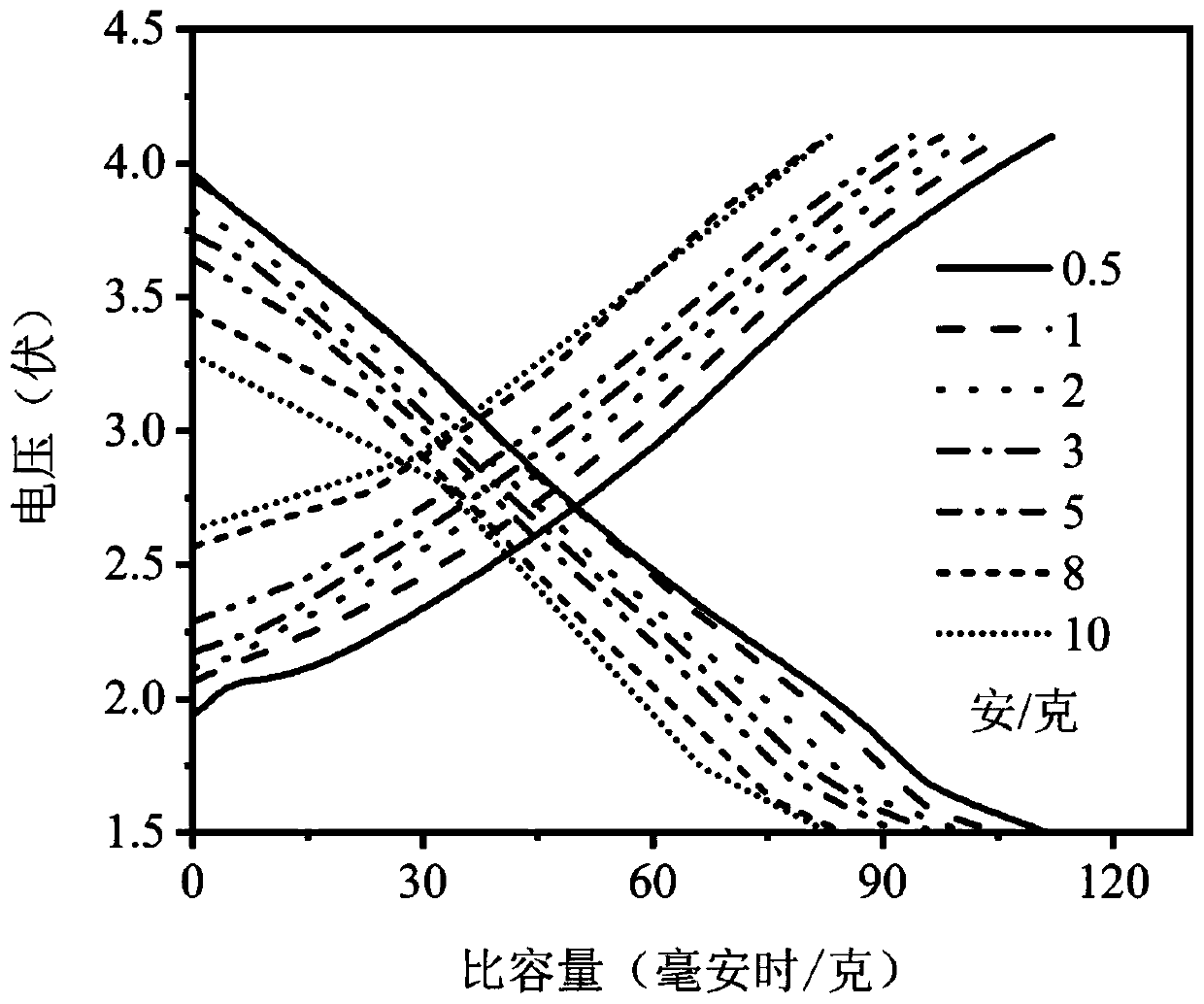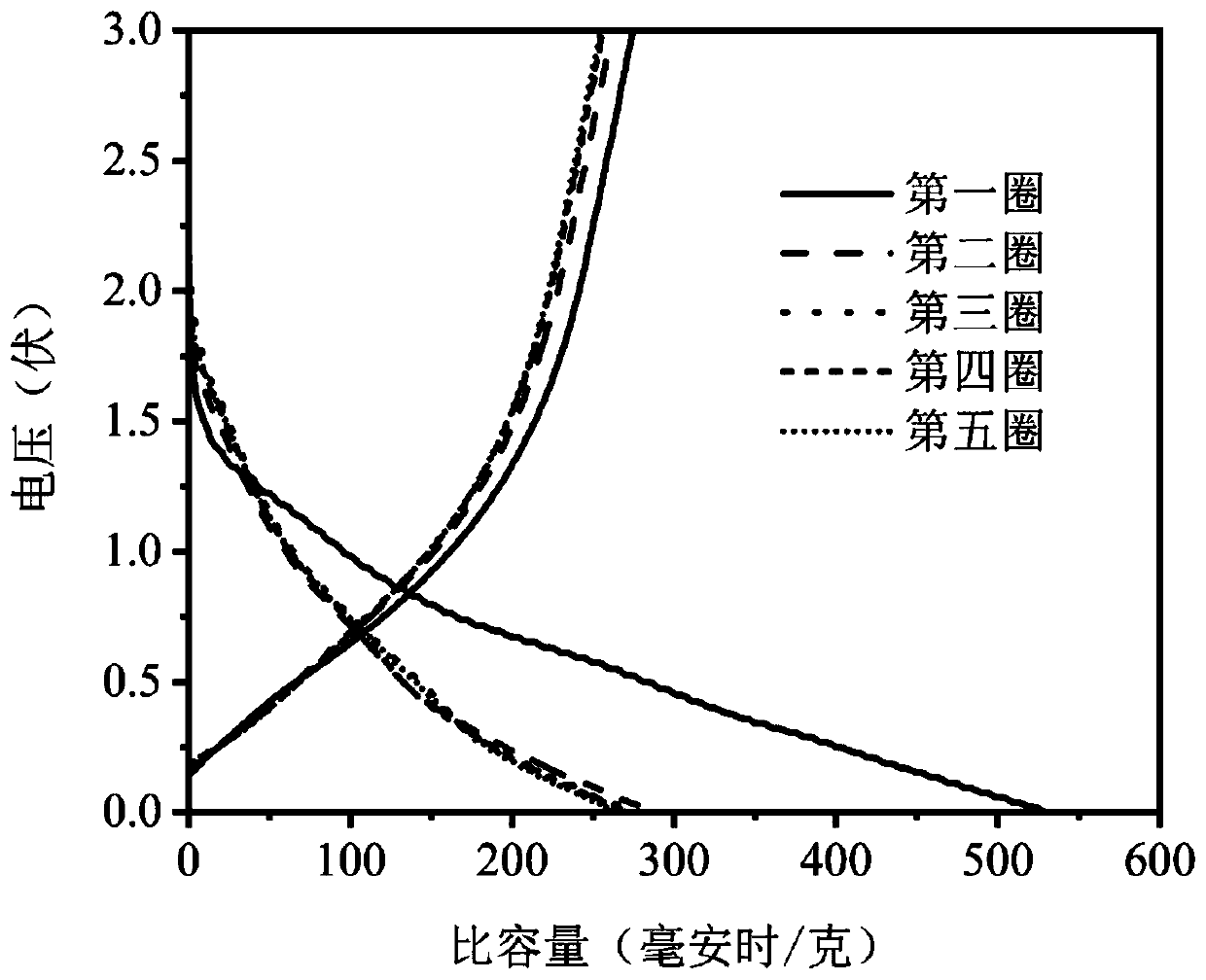Potassium ion hybrid capacitor and preparation method thereof
A hybrid capacitor, potassium ion technology, applied in the manufacture of hybrid/electric double layer capacitors, hybrid capacitor electrodes, hybrid capacitor electrolytes, etc. Chemical properties and other issues, to achieve the effect of favorable utilization, high energy-power performance, and promotion of kinetics
- Summary
- Abstract
- Description
- Claims
- Application Information
AI Technical Summary
Problems solved by technology
Method used
Image
Examples
Embodiment 1
[0042] Activated activated carbon was used as the positive electrode material, which was activated in a tube furnace at 800°C for 60 minutes by mixing commercial activated carbon with KOH at a ratio of 1:5. After activation, the sample was washed in 1 mol / L HCl to remove residual KOH, then filtered and washed with a large amount of deionized water until neutral, and dried. After activation, mix activated carbon with conductive carbon black (super P) and binder (sodium carboxymethyl cellulose) in a ratio of 8:1:1, add deionized water and stir evenly, and coat on aluminum foil to obtain a positive electrode . The active carbon positive electrode is used as the working electrode, and the potassium sheet is used as the counter electrode to assemble a potassium ion half-cell. It is tested under a working voltage window of 1.5 to 4.1 volts (relative to potassium / potassium ions). The charge and discharge curves under different current densities are as follows: figure 1 As shown, the...
Embodiment 2
[0048] This embodiment is the same as Embodiment 1, except that the mass ratio of the positive / negative electrodes of the potassium ion hybrid capacitor is 1.8:1. Specifically, the activated carbon is used as the positive electrode after activation, and the nitrogen / oxygen co-doped carbon nanosheets prepared by carbonization for 60 minutes after pre-potassiation treatment are used as the negative electrode. Ester and diethyl carbonate (volume ratio 1:1) are used as the electrolyte to assemble a potassium ion hybrid capacitor with a positive / negative electrode mass ratio of 1.8:1. The rate performance of potassium ion hybrid capacitors is as follows: Figure 8 As shown, it has a specific capacity of 83.6 mAh / g at a current density of 0.5 A / g. Its excellent rate performance is reflected in the fact that it still maintains a high specific capacity of 69.1 mAh / g at a high current density of 10 A / g, showing excellent fast charge / discharge capabilities. Figure 9 The relationship ...
Embodiment 3
[0050] This embodiment is the same as Example 1, except that the electrolyte is 0.8 mol / liter of potassium hexafluorophosphate dissolved in ethylene carbonate and diethyl carbonate (volume ratio 1:1), and the positive / negative electrode mass ratio is 1.8: 1. Specifically, the activated carbon is used as the positive electrode after activation, and the nitrogen / oxygen co-doped carbon nanosheets prepared by carbonization for 60 minutes after pre-potassiation treatment are used as the negative electrode. 0.8 mol / L potassium hexafluorophosphate is dissolved in ethylene carbonate and carbonic acid Diethyl ester (volume ratio 1:1) is used as the electrolyte, and a potassium ion hybrid capacitor is assembled, and the positive / negative electrode mass ratio is 1.8:1. Its energy density and power density are as Figure 10 As shown, there are energy densities of 142 and 71 Wh / kg at power densities of 926 and 13452 W / kg.
[0051] In summary, electrode material design, electrolyte optimi...
PUM
 Login to View More
Login to View More Abstract
Description
Claims
Application Information
 Login to View More
Login to View More - R&D
- Intellectual Property
- Life Sciences
- Materials
- Tech Scout
- Unparalleled Data Quality
- Higher Quality Content
- 60% Fewer Hallucinations
Browse by: Latest US Patents, China's latest patents, Technical Efficacy Thesaurus, Application Domain, Technology Topic, Popular Technical Reports.
© 2025 PatSnap. All rights reserved.Legal|Privacy policy|Modern Slavery Act Transparency Statement|Sitemap|About US| Contact US: help@patsnap.com



